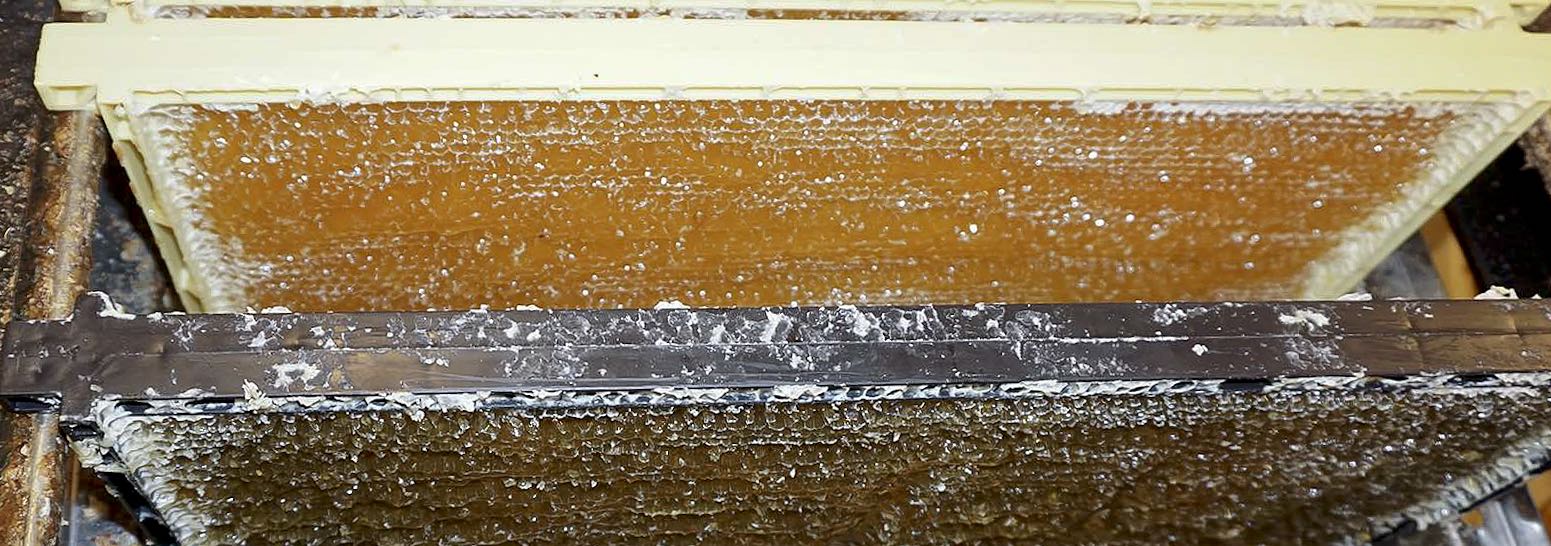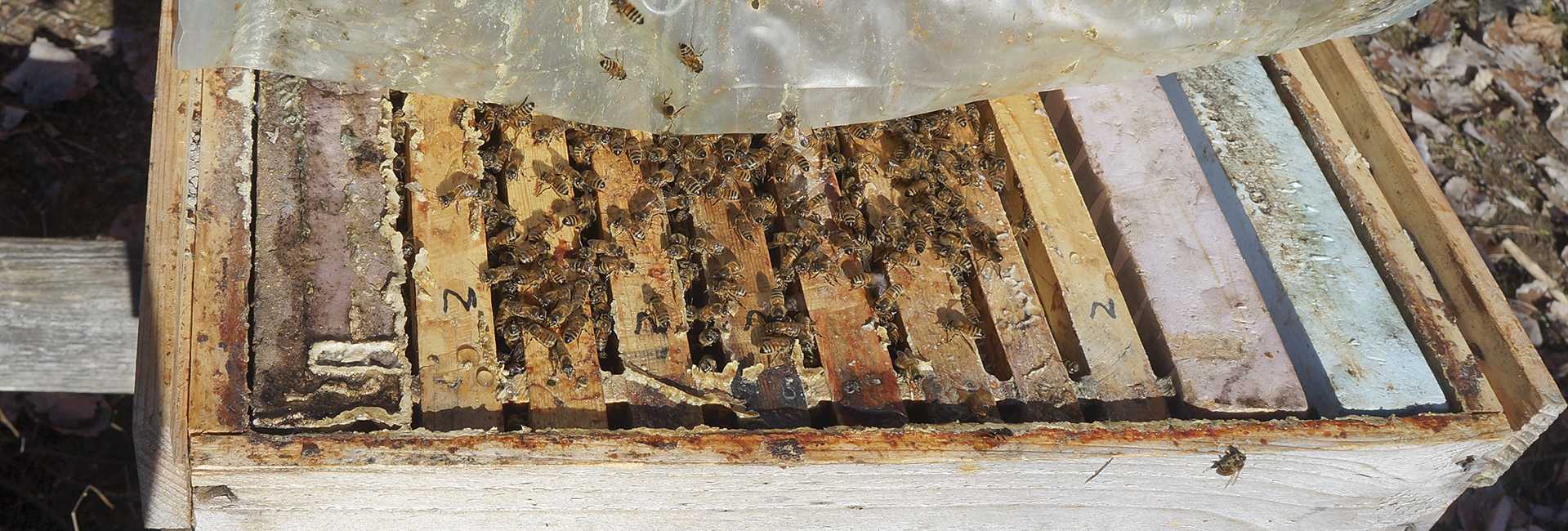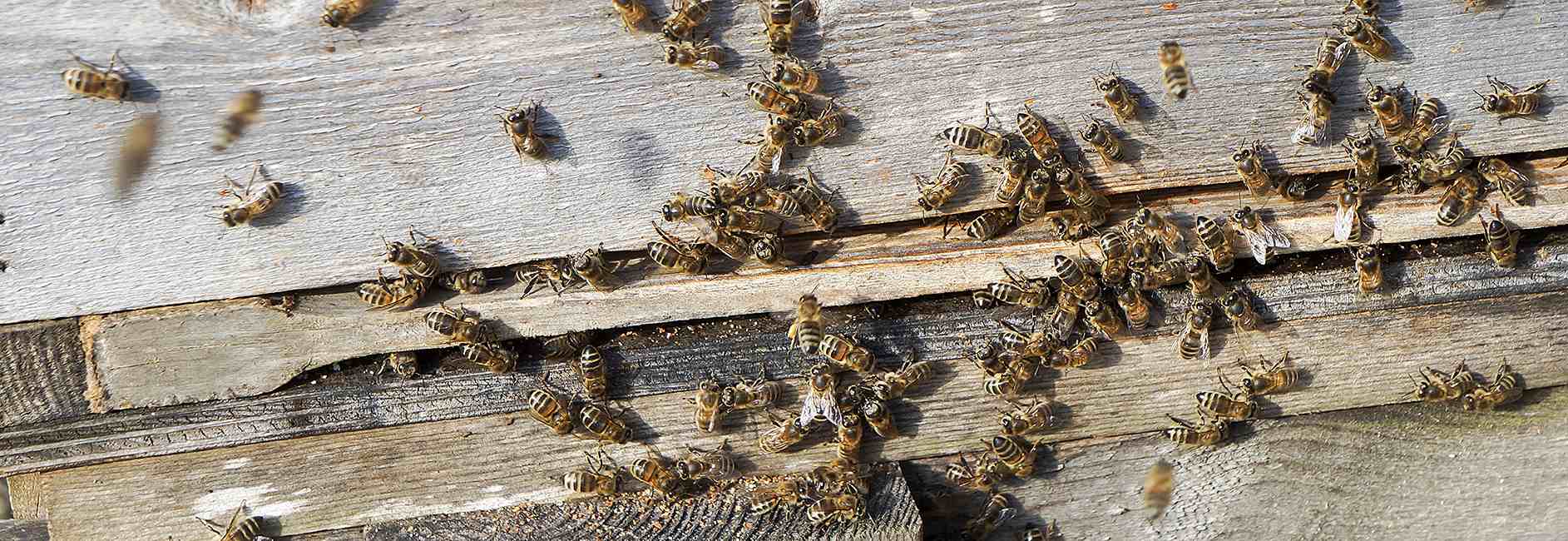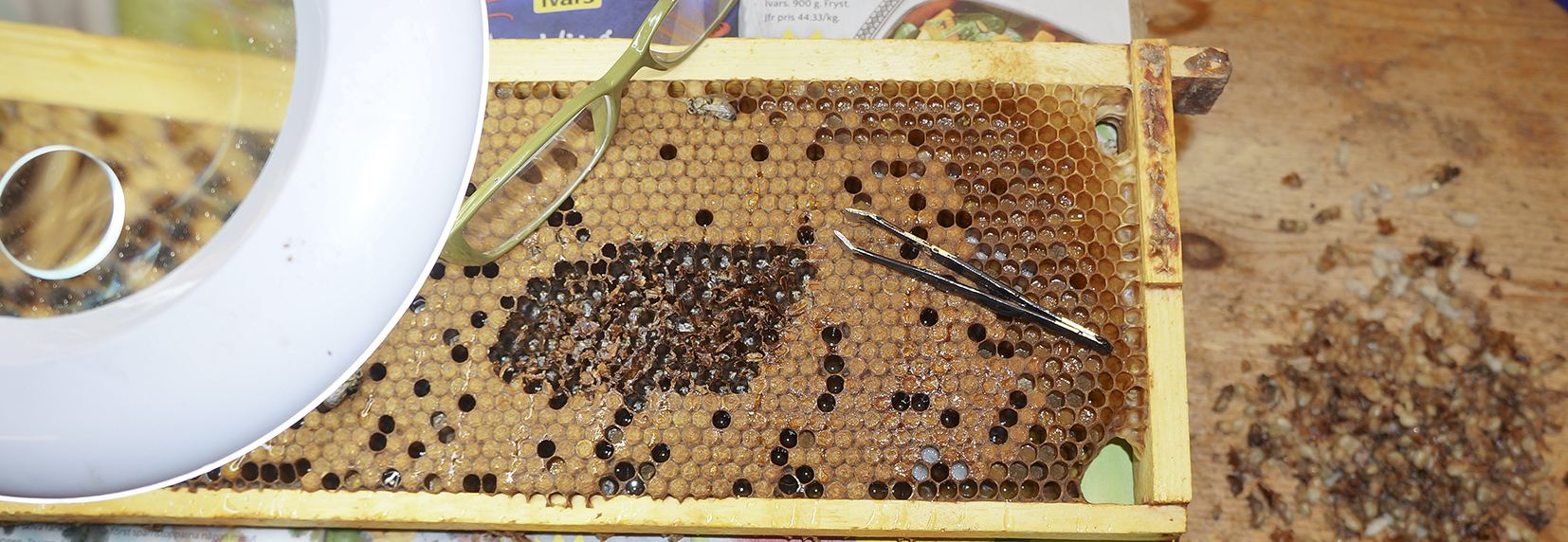Hans-Otto Johnsen was very skilled already in his youth keeping old American cars and trucks going. That skill can be very handy for a commercial beekeeper. For many years he worked as an expert on explosives, but he got
Cell size affects water content

I started taking down my bees to small cell size 15 years ago. 10 years ago I had combs with 4.9 mm, 5.1 mm and 5.4 mm cell size in the supers. At one time I did some measurements of
Free bees
This year is a year of swarms in Sweden. The weather is chilly and damp. Bees are sitting a lot inside having little to do but making queen cells. Maybe like many others in such a situation, thinking of reproduction.:)
Treatment free feral bees

Up till now anyway, this colony of bees (and their ancestors forming this colony’s ancestor colonies) that has lived in a wall since several colony generations, has never been treated with any kind of chemicals ever, against Varroa mites or
Meeting the sun

The second Sunday in March the temperature, wind and sun, together with filled intestines of the bees that had produced the heat for the winter cluster took these bees out to meet the sun. The main cleansing flight took place.
Understanding history
The first commercially wax foundation, in USA 1876, produced by A.I. Root, had imprints for 5 cells per inch for worker cells, a little less than 5.1 mm cell size. That was said to be an average of cell sizes
Small cells and VSH

There have been numerous tests of varroa reproduction with bees on different cellsizes throughout the years, with the assumption that you then test varroa resistance. As far as I understand that can be true, but you don’t know to what
Neonics and success
Bees visit corn for pollen, period. Bees visit canola for pollen. Bees visit potatoes for pollen (Danish tests). Bees visit a lot of flowers for pollen. Bees get what the pollen is enriched with. Neonics are not good for bees.
MT-colony conclusion
I have shared the performance of this colony which had almost a box of plastic small cell frames and natural positioning of these frames (as the uppermost broodbox). Which also had a tough experience with mice living in the bottom
First crop from the multitest colony
Last year I gave almost a whole box of plastic frames 4.95 mm cellsize with natural positioning, http://www.elgon.es/diary/?p=384 This colony was a very nice colony, but needed some thymol as it came up with some wingless bees. It gave an